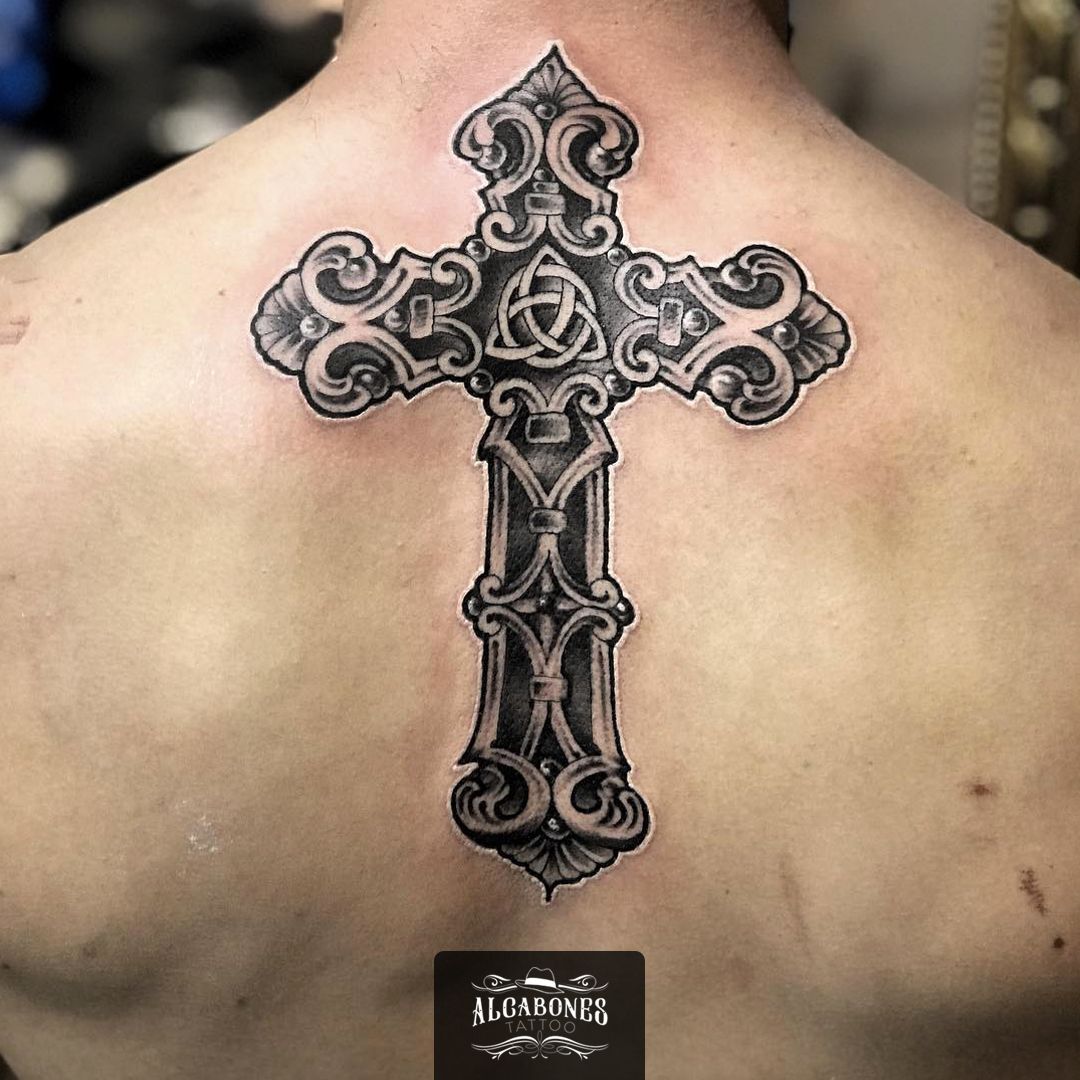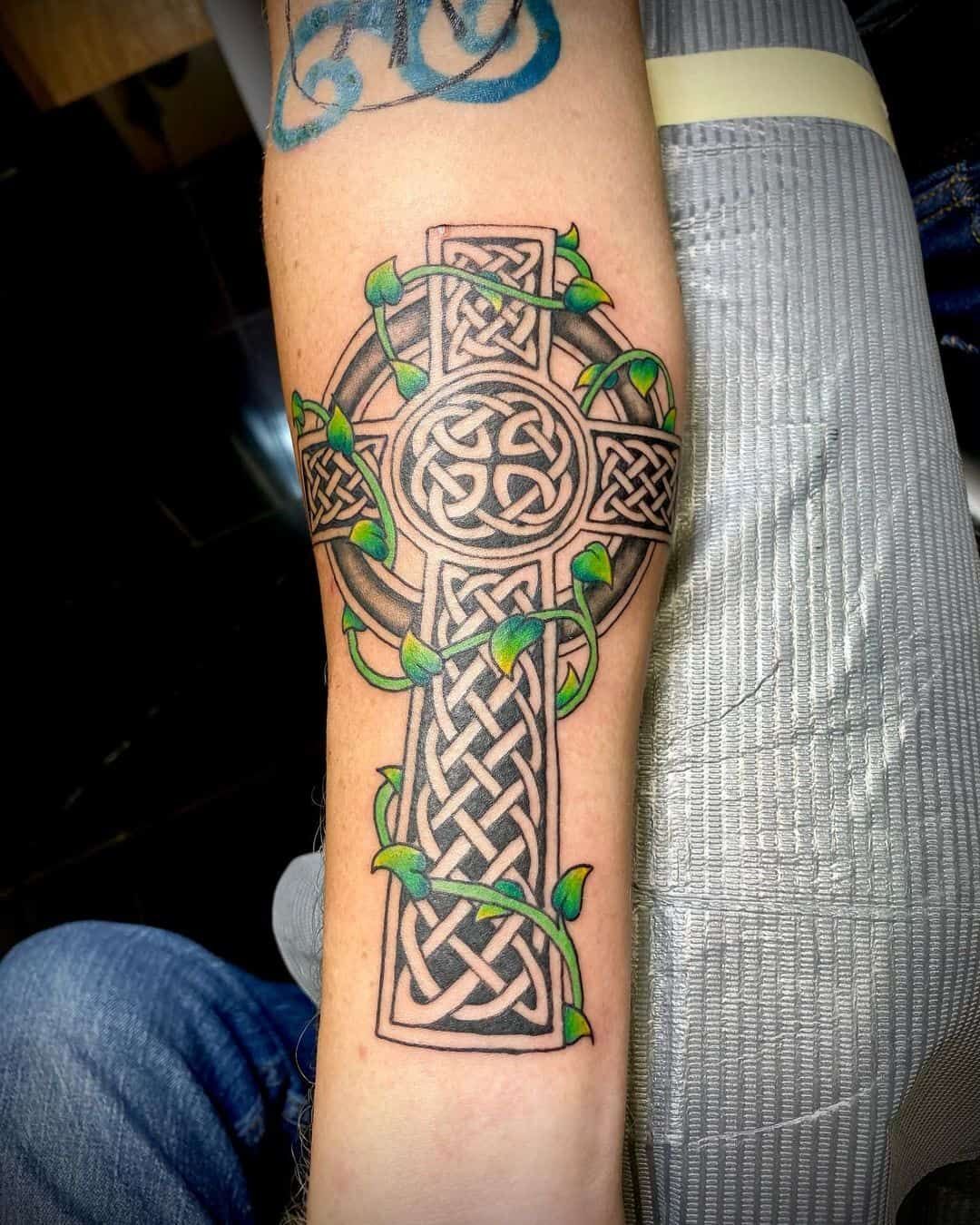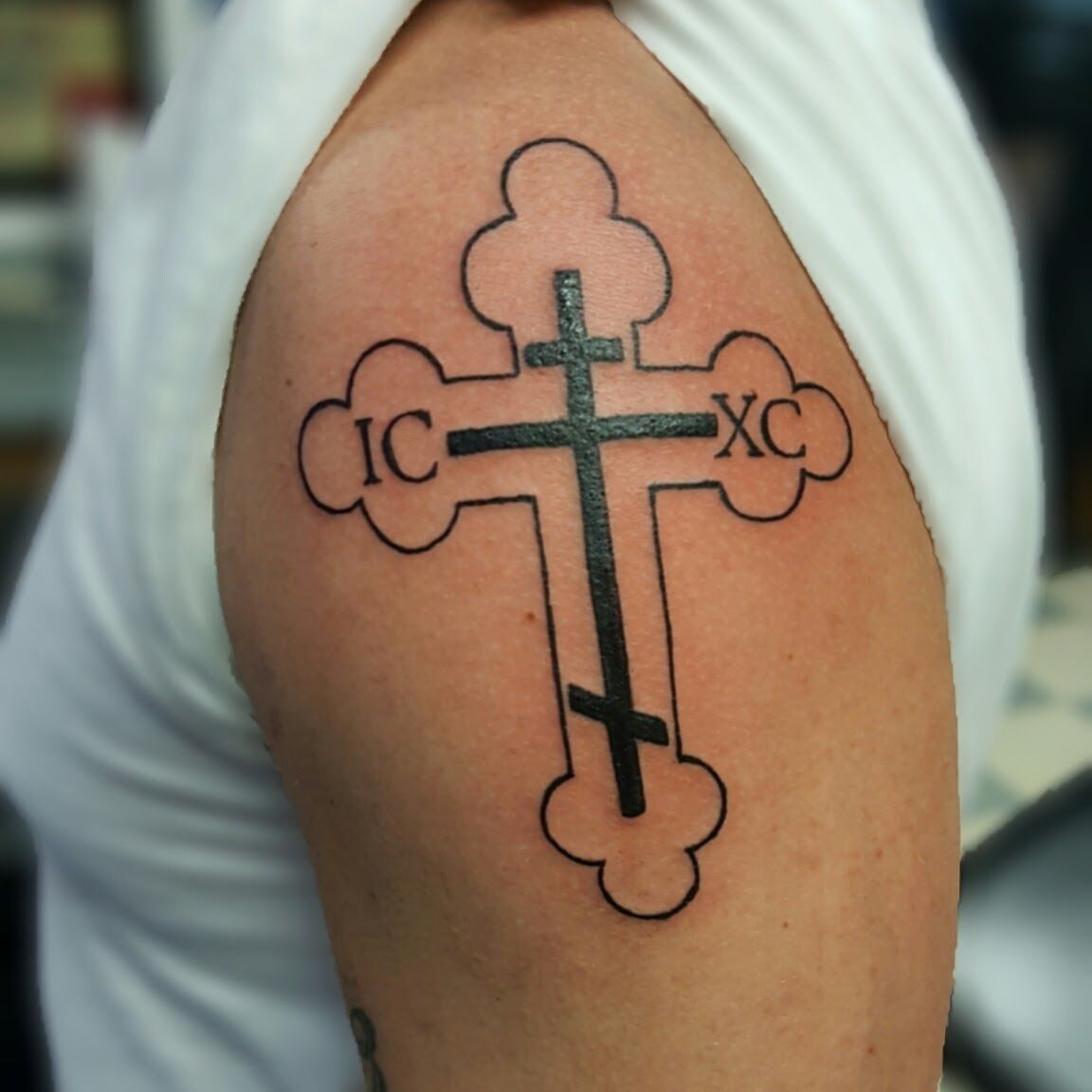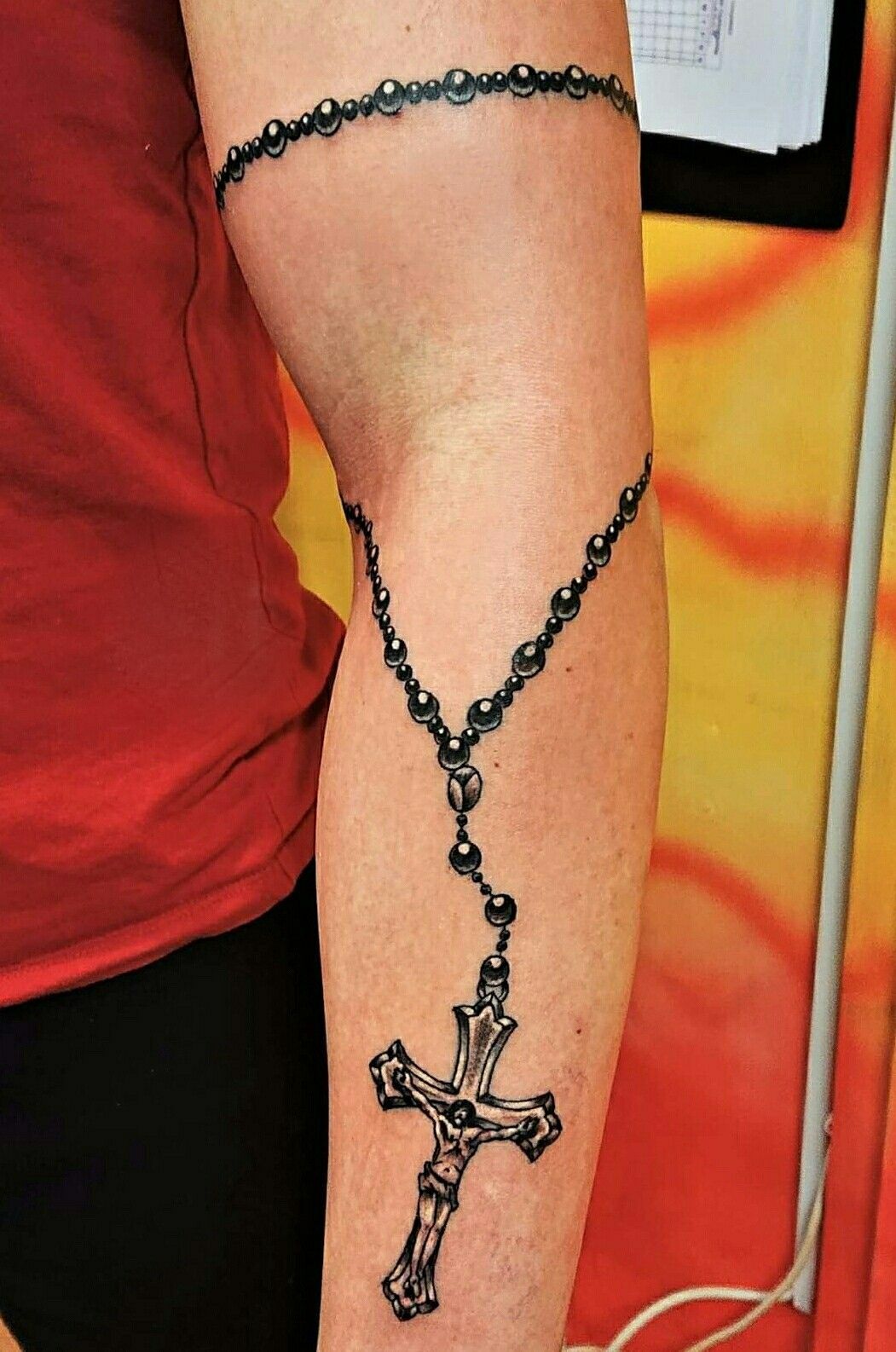Discover a new way to express your spiritual journey and embrace your faith with a piece of timeless body art: the cross tattoo. As one of the most enduring symbols in history, the cross offers a compelling fusion of spirituality, culture, and personal expression. From the classic Latin cross to the intricate Celtic design, these cross tattoos might just be the missing piece in your spiritual quest. There's an inspiring world of cross tattoos waiting just a scroll away!
Are you only interested in tattoo designs and want to skip the educational part?
No problem, we got you covered! Click HERE to get inspired.
What does the cross symbolize?
The cross is a significant symbol in Christianity, representing the crucifixion of Jesus Christ and the redemption of humanity. It stands as a symbol of faith, sacrifice, and salvation for Christians around the world.
Furthermore, it is often viewed as a representation of God's love for humanity, as it signifies the ultimate sacrifice of his son, Jesus Christ, for the sins of mankind. The cross also symbolizes hope, resurrection, and eternal life, which are central themes in the Christian faith. It acts as a constant reminder to Christians of the enduring promise of eternal life that follows faith in Jesus Christ.
Beyond its religious implications, the cross is also seen as a symbol of intersection, connection, and balance in other cultural and historical contexts.
What is the meaning behind cross tattoos?
Cross tattoos hold diverse meanings depending on the wearer's personal beliefs and the specific design of the tattoo. In many cases, a cross tattoo is a representation of religious faith, particularly within Christianity, symbolizing the wearer's belief in the sacrifice, resurrection, and salvation of Jesus Christ. However, it can also represent elements of spirituality more broadly, not necessarily tied to a specific religion.
Beyond religious significance, cross tattoos can symbolize protection, courage, or honor. They may also represent a personal journey, a memorial, or the concept of balance and intersection in life.
Moreover, certain designs carry unique meanings: for instance, a Celtic cross often signifies heritage and culture, while a tribal cross may be used to denote courage and the warrior spirit.
Despite these varied meanings, the exact interpretation of a cross tattoo ultimately rests with the individual who chooses to wear it.
best cross tattoo ideas and their meanings
Cross tattoos have been a popular choice for many years, providing a range of designs that can cater to different personalities, aesthetics, and meanings. They can be deeply personal, steeped in symbolism, and allow for creative expression. Here are five cross tattoo ideas and their respective meanings:
Latin Cross tattoo
The most recognized symbol of Christianity, the Latin cross (a cross with a longer descending arm), is often tattooed as a sign of religious faith, representing Jesus' sacrifice and humanity's redemption. Its simplicity allows for personalization with additional elements, such as names, dates, or scripture.
Celtic Cross tattoo
Incorporating a circle around the intersection of the cross, the Celtic cross is a symbol of Celtic heritage and culture. It combines Christian symbolism with ancient Celtic roots, representing the unity of heaven and earth. Celtic knots, which signify eternal life, can add a layer of complexity and beauty to the design.
Orthodox Cross tattoo
Distinguished by two smaller crossbeams above and below the main one, the Orthodox cross has deep meaning in Eastern Orthodox Christianity. It signifies the balance between divine and human nature, as well as faith in the Trinity.
Rosary Cross tattoo
A tattoo of a rosary, usually represented draped around the neck, wrist, or ankle, often signifies the wearer's constant connection to their faith. The rosary beads symbolize prayers, while the cross at the end signifies salvation.
Tribal Cross tattoo
Influenced by indigenous art, a tribal cross tattoo often uses bold, black lines and intricate patterns. It's typically associated with strength, courage, or the warrior spirit, and can represent the wearer's individual journey and personal resilience.
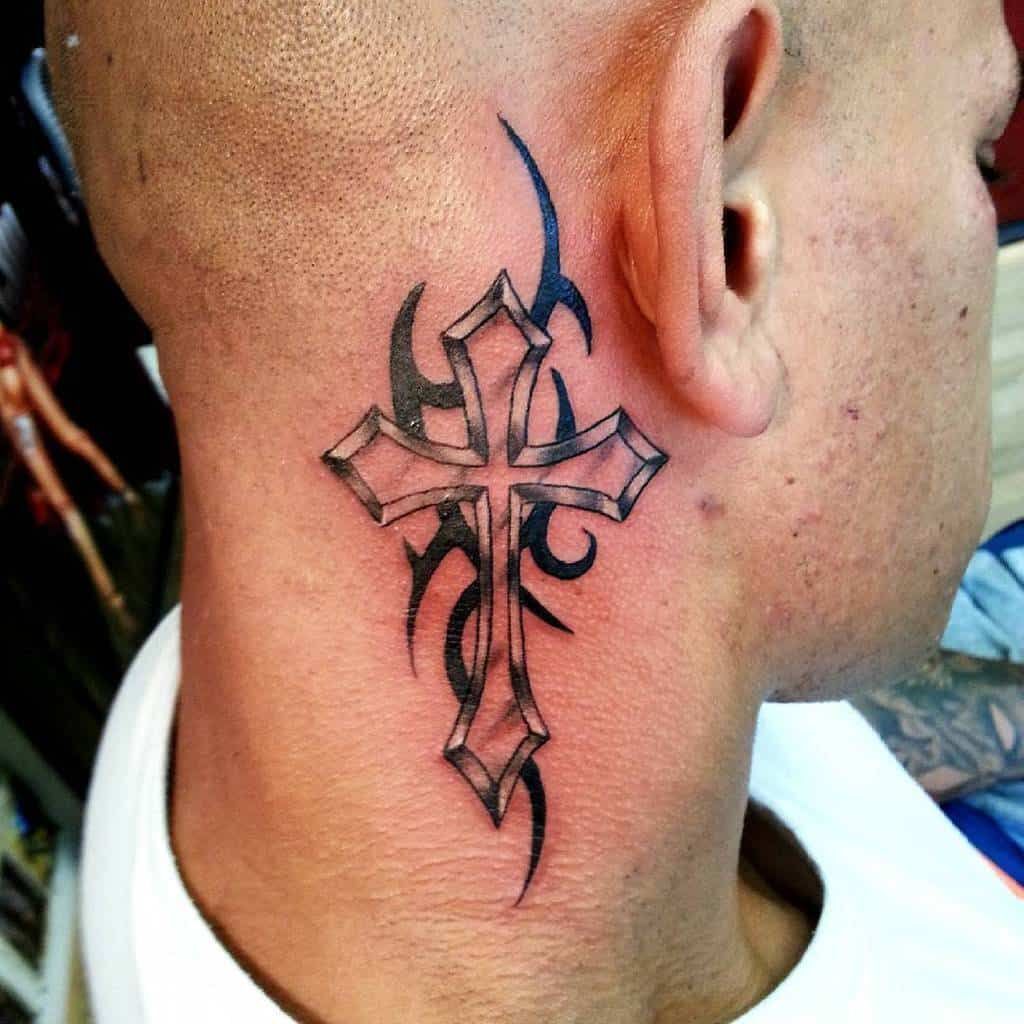
Who should get a cross tattoo?
A cross tattoo can be a fitting choice for a wide range of people, depending on their personal beliefs, experiences, and what they want the tattoo to symbolize.
Firstly, those with Christian faith often get cross tattoos as a symbol of their religious devotion, representing the crucifixion of Jesus Christ and the salvation it offers to humanity.
Beyond religious symbolism, a cross tattoo can also appeal to individuals who identify with its other meanings. For instance, those who view it as a symbol of protection, balance, or the intersection of various aspects of life may choose a cross tattoo. It can also be a potent symbol for someone who has overcome a challenging period, signifying resilience, strength, and personal growth.
People with a connection to certain cultural or heritage symbols, like the Celtic or tribal cross, may also choose to get a cross tattoo to express their identity and roots.
It's important to remember that a tattoo is a personal decision and its meaning can greatly vary from person to person. As such, anyone who resonates with the symbolism of the cross and what it can represent could consider getting a cross tattoo. However, as with any tattoo, it's crucial to consider the commitment and personal significance before proceeding.
General Breakdown Of Tattoo Pain Levels On Different Body Parts
Here is a breakdown of the different tattoo pain levels:
- Low: This level of pain is generally described as a mild discomfort or tickling sensation. It is similar to the sensation of getting a light scratch or scrape.
- Moderate: This level of pain is generally described as a moderate discomfort or aching sensation. It is similar to the sensation of getting a deep scratch or scrape or being pinched.
- High: This level of pain is generally described as a strong discomfort or throbbing sensation. It is similar to the sensation of getting a burn or being stung by a bee.
It's important to note that pain tolerance is highly individual and can vary greatly from person to person. Some people may find certain body parts more or less painful than others, and the same body part can be more or less painful for different people. Additionally, the level of pain can be affected by factors such as the size and location of the tattoo, the skill of the tattoo artist, and the individual's own pain threshold.
Tattoo placement pain level chart
Body Part | Pain Level | Explanation |
Forehead | Low | The forehead has few nerve endings, so it is not a particularly painful area. |
Eyebrows | Low | The eyebrows have few nerve endings, so the pain level is relatively low. |
Ear | Low | The ear is a relatively thin and fleshy area, so the pain level is low. |
Nostril | Low | The nostril is a small area with thin skin, so the pain level is low. |
Lip | Low to Moderate | The lip has more nerve endings than some other areas, so it may be slightly more painful. |
Cheek | Low to Moderate | The cheek has a moderate amount of nerve endings, so it may be slightly more painful. |
Moderate | The neck has a moderate amount of nerve endings, so it may be slightly more painful. | |
Moderate to High | The chest has a high concentration of nerve endings, so it can be quite painful. | |
Abdomen | High | The abdomen has a high concentration of nerve endings, so it can be quite painful. |
Back | High | The back has a high concentration of nerve endings, so it can be quite painful. |
Shoulders | High | The shoulders have a high concentration of nerve endings, so they can be quite painful. |
Upper Arms | Moderate to High | The upper arms have a moderate to high concentration of nerve endings, so they can be somewhat painful. |
Elbows | High | The elbows have a high concentration of nerve endings, so they can be quite painful. |
Forearms | Moderate | The forearms have a moderate concentration of nerve endings, so they are not as painful as some other areas. |
Hands | High | The hands have a high concentration of nerve endings, so they can be quite painful. |
Lower Arms | Low to Moderate | The lower arms have a lower concentration of nerve endings, so they are not as painful as some other areas. |
Wrists | Low | The wrists have a low concentration of nerve endings, so they are not very painful. |
Lower Back | High | The lower back has a high concentration of nerve endings, so it can be quite painful. |
Buttocks | High | The buttocks have a high concentration of nerve endings, so they can be quite painful. |
Thighs | High | The thighs have a high concentration of nerve endings, so they can be quite painful. |
Knees | High | The knees have a high concentration of nerve endings, so they can be quite painful. |
Calves | Low to Moderate | The calves have a low to moderate concentration of nerve endings, so they are not as painful as some other areas. |
Ankles | Low | The ankles have a low concentration of nerve endings, so they are not very painful. |
Tattoo aftercare tips
Before getting a tattoo:
Choose a reputable tattoo artist and parlor. Research the artist's portfolio and read reviews from previous clients.
Consult with the artist about the design and placement of the tattoo.
Make sure you are in good health. If you have any medical conditions or are taking any medications that may affect your ability to heal, be sure to let your tattoo artist know.
Consider using a numbing cream to reduce pain during the tattooing process. These creams contain a numbing agent (such as lidocaine) that can be applied to the skin before the tattoo is done. It's important to follow the instructions on the numbing cream and to only use it as directed.
Avoid alcohol, caffeine, and other substances that can thin your blood for at least 24 hours before getting a tattoo.
Eat a healthy meal before your tattoo session to ensure that your blood sugar is stable.
Wear loose, comfortable clothing that allows easy access to the area being tattooed.
After getting a tattoo:
Follow the aftercare instructions provided by your tattoo artist. These may include:
Keeping the tattoo clean and covered with a bandage for the first few hours after getting tattooed.
Washing the tattoo with lukewarm water and a mild soap (such as unscented, antimicrobial soap) and patting it dry with a clean towel.
Applying a thin layer of tattoo ointment or lotion (such as A&D or Aquaphor) to the tattoo and covering it with a clean bandage or wrap.
Repeating this process for the first few days, or until the tattoo has fully scabbed over.
Avoid soaking the tattoo in water for the first week, such as in a bath or pool.
Avoid picking or scratching at the scabs, as this can cause the tattoo to fade or become infected.
Avoid exposure to direct sunlight or tanning beds for at least 2-4 weeks.
If you experience any redness, swelling, or unusual discharge, contact your tattoo artist or a healthcare professional.
Overall, it's important to keep your tattoo clean and moisturized during the healing process to ensure that it heals properly and looks its best. Using a numbing cream can help reduce pain during the tattooing process, but it's important to use it as directed and to follow all aftercare instructions to ensure that your tattoo heals properly.
People Also Ask:
What is the meaning of a cross tattoo?
A cross tattoo can have a variety of meanings, depending on the individual. It can represent one's faith and belief in Christianity, serve as a reminder of a loved one, or symbolize hope and strength during difficult times. It can also represent one's personal beliefs and spiritual journey.
Is it disrespectful to get a cross tattoo?
This is a subjective topic, and opinions may vary. Some people may view getting a cross tattoo as a form of respect and devotion to their faith, while others may view it as disrespectful or inappropriate. It is ultimately up to the individual to decide what they feel is appropriate.
What are some different types of cross tattoos?
Some popular types of cross tattoos include the traditional cross, Celtic cross, Gothic cross, cross with wings, cross with flowers, and iron cross. Each type has its unique meaning and design elements.
Can a cross tattoo have different meanings?
Yes, a cross tattoo can have different meanings for different people. It can represent one's personal beliefs and experiences, varying from person to person.
What is the origin of the cross tattoo?
The history of the cross tattoo can be traced back to ancient times when it was used as a symbol of faith and devotion. In the early days of Christianity, followers would often tattoo themselves with the image of the cross as a way to show their dedication to the religion. The practice of tattooing crosses became more popular during the medieval period and has continued to be a popular choice for tattoos to this day.
Watch A video of a cross tattoo done by a pro
200+ Cross tattoo Ideas to get inspired from
Final thoughts
Cross tattoos are a powerful and meaningful symbol with deep religious and cultural significance. Whether you want to express your faith or a significant reminder of a loved one, a cross tattoo can be a great choice. It is essential to consider the tattoo's personal significance and choose a design that resonates with you. Cross tattoos can also be combined with other symbols and designs to create a unique and personalized tattoo. As with any tattoo, it's essential to research and chooses a reputable tattoo artist to ensure that your tattoo is done safely and professionally.

